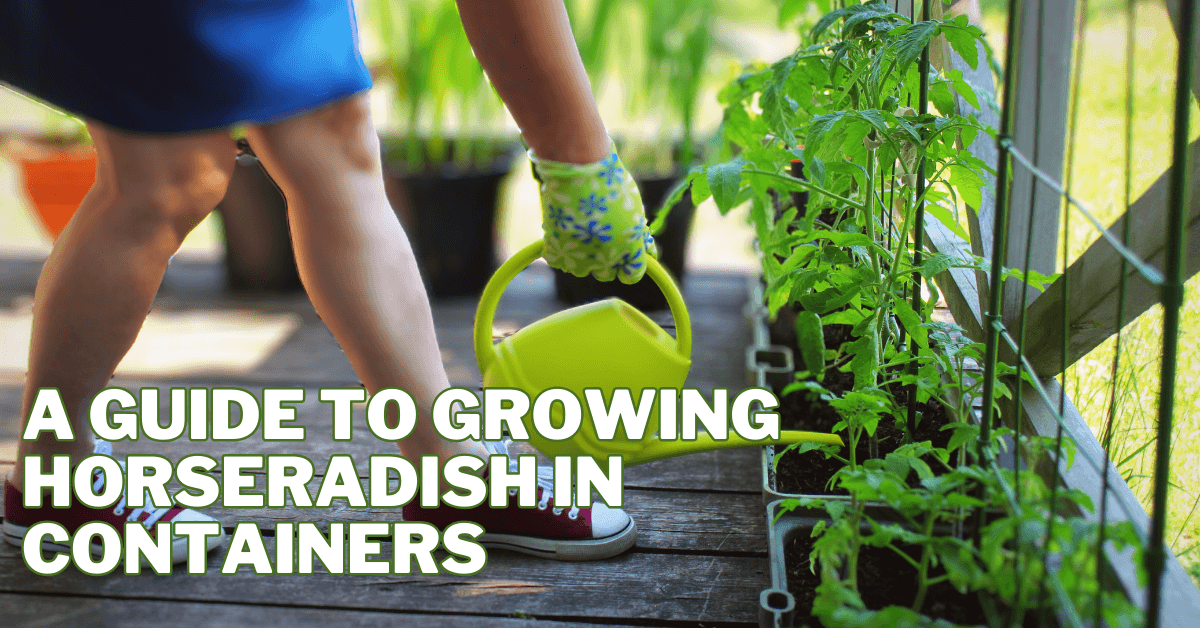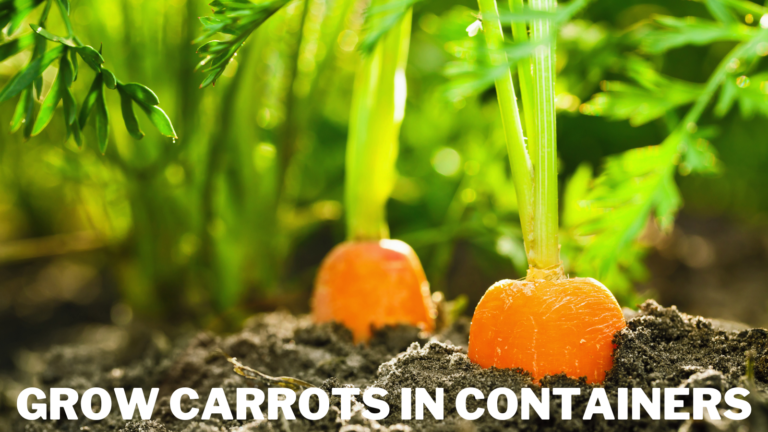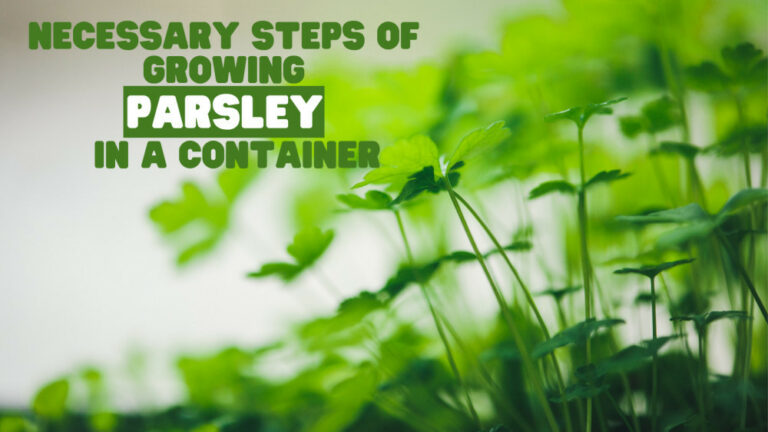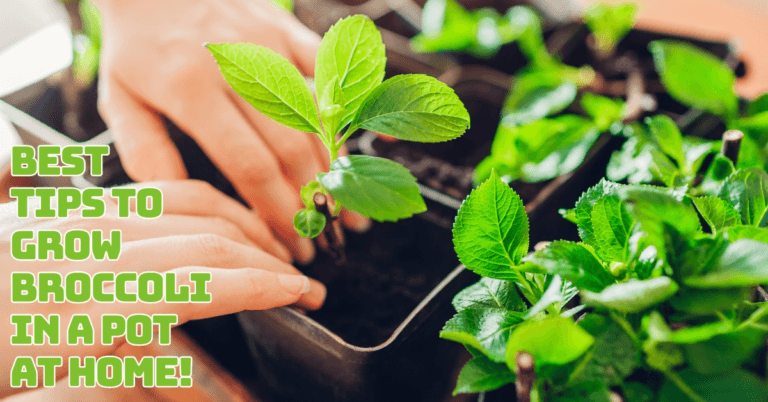A Guide To Growing Horseradish In Containers
A Guide To Growing Horseradish In Containers
Welcome to the world of horseradish cultivation, where the distinctive kick of this spicy root meets the versatility of container gardening.
Whether you're an aspiring gourmet chef or a curious gardener with limited space, the journey to grow horseradish in containers is an exciting endeavour that promises culinary satisfaction and gardening innovation.
The art of growing horseradish in containers, often referred to as “horseradish in pots,” opens up new possibilities for urban and small-space gardeners to enjoy this flavourful root's bounty.
Within the confines of pots, balconies, and patios, you can harness the robust flavours of horseradish, elevating your dishes with its signature tang.
Additionally, container gardening offers the advantage of easier mobility, allowing you to relocate your horseradish plants to sunnier spots or shelter them from harsh weather conditions as needed.
In this article, we explore comprehensively, uncovering the secrets to successful horseradish container gardening.
From choosing the right container and perfect soil mix to providing the ideal care regimen, we'll guide you through every step of the process.
Get ready to immerse yourself in the world of horseradish, where each leaf and root tells a tale of flavour, ingenuity, and the magic of growing your ingredients.
Health Benefits Of Horseradish
Horseradish, often celebrated for its bold flavour and culinary uses, also boasts a range of health benefits that contribute to overall well-being.
Here are some detailed points highlighting the health-promoting properties of horseradish:
1. Rich In Nutrients
Horseradish is a good source of essential nutrients, including vitamins C and B6, potassium, calcium, and dietary fiber, collectively supporting various bodily functions.
2. Antioxidant Power
Horseradish contains compounds like glucosinolates and isothiocyanates, known for their antioxidant properties.
These compounds help combat oxidative stress, reduce inflammation, and protect cells from damage.
3. Immune Boost
Horseradish's high vitamin C content enhances immune system function. Vitamin C stimulates the production of white blood cells and antibodies, fortifying the body's defence against infections.
4. Digestive Aid
The compounds found in horseradish have been linked to improved digestion. Horseradish stimulates the production of digestive enzymes, promoting efficient digestion and nutrient absorption.
5. Anti-Microbial Effects
Horseradish possesses natural antimicrobial properties due to its compounds, which can help fight bacteria and prevent the growth of harmful microorganisms in the body.
6. Sinus And Respiratory Health
The aromatic compounds in horseradish, especially when grated or processed, can help clear congested sinuses and promote respiratory health by reducing inflammation and mucus production.
7. Anti-Inflammatory Benefits
Isothiocyanates in horseradish have anti-inflammatory properties that may help alleviate symptoms of chronic inflammatory conditions like arthritis and other inflammatory disorders.
8. Cardiovascular Support
Horseradish may support heart health by aiding in blood vessel dilation, which can help lower blood pressure. Additionally, its fiber content may contribute to healthy cholesterol levels.
9. Cancer Prevention
Some studies suggest that the compounds in horseradish may have anti-cancer effects. The glucosinolates and isothiocyanates in horseradish have been linked to inhibiting the growth of certain cancer cells.
10. Weight Management
The dietary fiber in horseradish can promote a feeling of fullness, aiding in weight management by reducing overeating and supporting healthy digestion.
11. Blood Sugar Regulation
Horseradish's fibre content and low glycemic index may help regulate blood sugar levels, making it a potential choice for those managing diabetes.
12. Detoxification
The compounds in horseradish can support the body's detoxification processes by promoting the elimination of toxins through improved liver function.
While horseradish offers these potential health benefits, it's important to remember that individual responses may vary.
Incorporating horseradish into a balanced diet and consulting a healthcare professional can contribute to a holistic approach to well-being.
Exploring The Tips For Growing Horseradish In Containers
Embarking on the journey of cultivating horseradish within the intimate confines of containers is akin to unravelling a culinary tapestry that interweaves bold flavours and innovative gardening.
Imagine having the zesty essence of horseradish at your fingertips, a vibrant addition to your culinary repertoire, regardless of the space you possess.
This adventure transcends traditional gardening, inviting you to embrace the art of container gardening while cultivating the intense allure of horseradish.
Here are the best tips to grow horseradish in your garden you must follow:
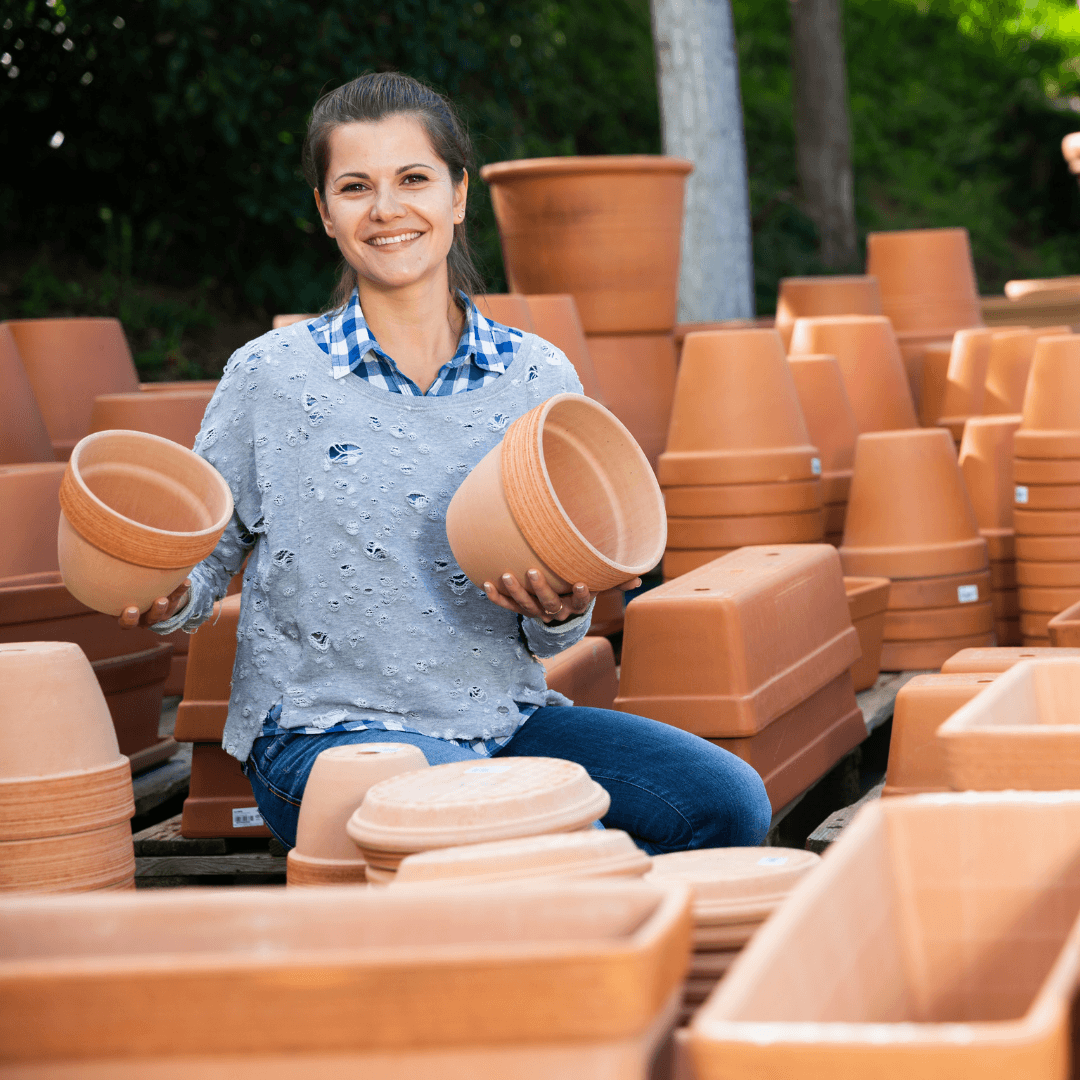
1. Deep Container Selection
The right container size is key to success in growing horseradish in containers. The length of horseradish roots necessitates a container that accommodates their growth without confinement.
Aim for containers with a depth of at least 18 inches, offering ample room for the roots to stretch and thrive.
This generous space ensures that the roots can explore the depths of the soil, preventing crowding and encouraging robust development.
With a depth of 18 inches or more, you safeguard the health and vigour of the horseradish plant, enabling it to establish a strong root system and sustain optimal growth.
Additionally, consider the dimensions of the container—opt for wider containers if you plan to grow multiple horseradish plants in the same container, allowing sufficient space between them.
By adhering to this principle of container selection, you lay the groundwork for a flourishing horseradish garden, where roots can reach their full potential and produce the signature tang that graces your culinary creations.
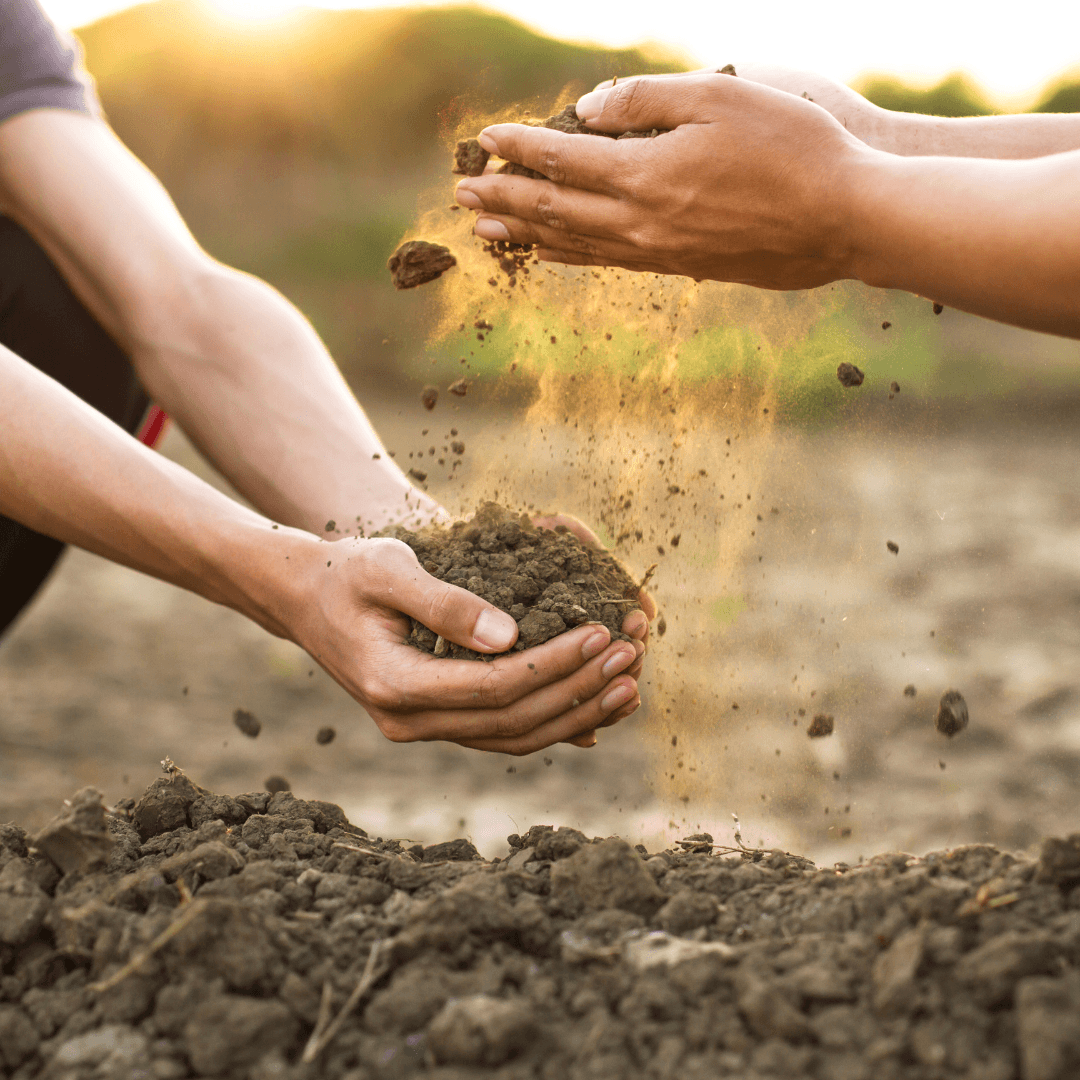
2. Quality Soil Mix
The optimal soil environment is paramount for successful horseradish container cultivation.
Begin by selecting a high-quality potting mix with excellent drainage properties, allowing excess water to escape and preventing the risk of root rot.
To enrich this mix, incorporate a generous amount of compost, which contributes essential nutrients and enhances the soil's structure and water-holding capacity.
The key lies in achieving a balanced mix that retains moisture without becoming waterlogged, striking a harmony between air circulation and moisture retention.
The soil's loose texture is pivotal in fostering unimpeded root penetration, enabling horseradish to establish a strong root system that anchors the plant and supports healthy top growth.
As the roots navigate the soil effortlessly, they can access vital nutrients and minerals, promoting vigorous growth and robust root development.
This synergy between well-draining soil, compost enrichment, and a loose structure forms the foundation of a nurturing environment where horseradish thrives, culminating in a bountiful harvest of aromatic and flavourful roots.
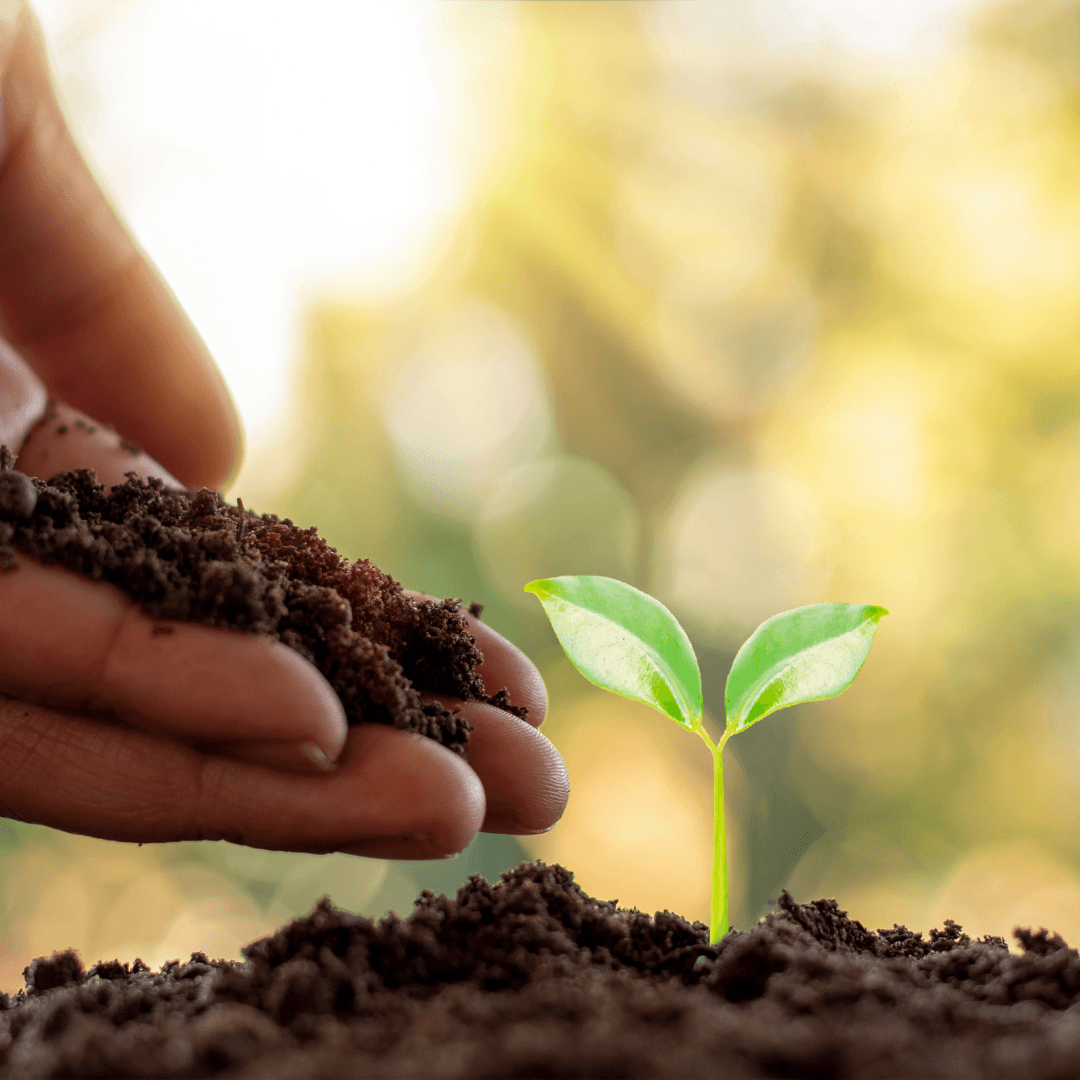
3. Planting Depth
The art of planting horseradish roots encompasses a delicate balance between depth, orientation, and spacing.
When embarking on this endeavour within a container, ensure that the horseradish roots are nestled at approximately 2 to 3 inches within the soil.
This depth strikes a harmonious chord between offering the roots sufficient space to establish themselves while remaining close enough to the surface to access vital nutrients, moisture, and oxygen.
The strategic positioning of the roots is equally important; the pointed ends should face upwards, inviting the plant to sprout and grow vigorously toward the light.
Proper spacing is paramount, as ample room between the roots discourages overcrowding, allowing each plant to flourish and expand without competing for resources.
When growing horseradish in containers, an ideal spacing of at least 18 inches between multiple roots encourages robust growth, minimizes the risk of root entanglement, and promotes a healthier root system.
With these precise parameters in mind, you orchestrate an environment where horseradish roots can embark on their growth journey, anchoring themselves in the soil as they reach toward the sky, all within the confines of your container garden.

4. Sunlight Requirements To Grow Horseradish
The interplay between sunlight and horseradish growth requires thoughtful orchestration, especially when cultivating this pungent plant within a container.
Optimal sun exposure is a catalyst for its flourishing, making the placement of the container a strategic decision. Aim to position the container in a locale that garners full sun for the day.
This abundant sunlight fuels the plant's photosynthesis, fostering robust leaf and root development. However, consider providing respite during the hottest hours in regions characterized by scorching heat.
Introducing partial shade during these peak times protects against potential stressors like heatwaves. This harmonious balance harnesses the benefits of sunlight while mitigating any adverse impacts of excessive heat.
It's crucial to note that horseradish's preference for sunlight doesn't compromise its adaptability to partial shade, especially when safeguarding the plant's health.
By meticulously selecting the container's location and finetuning the balance between full sun and occasional shade, you lay the groundwork for a container garden where horseradish thrives with vitality and resilience in the face of varying climatic challenges.
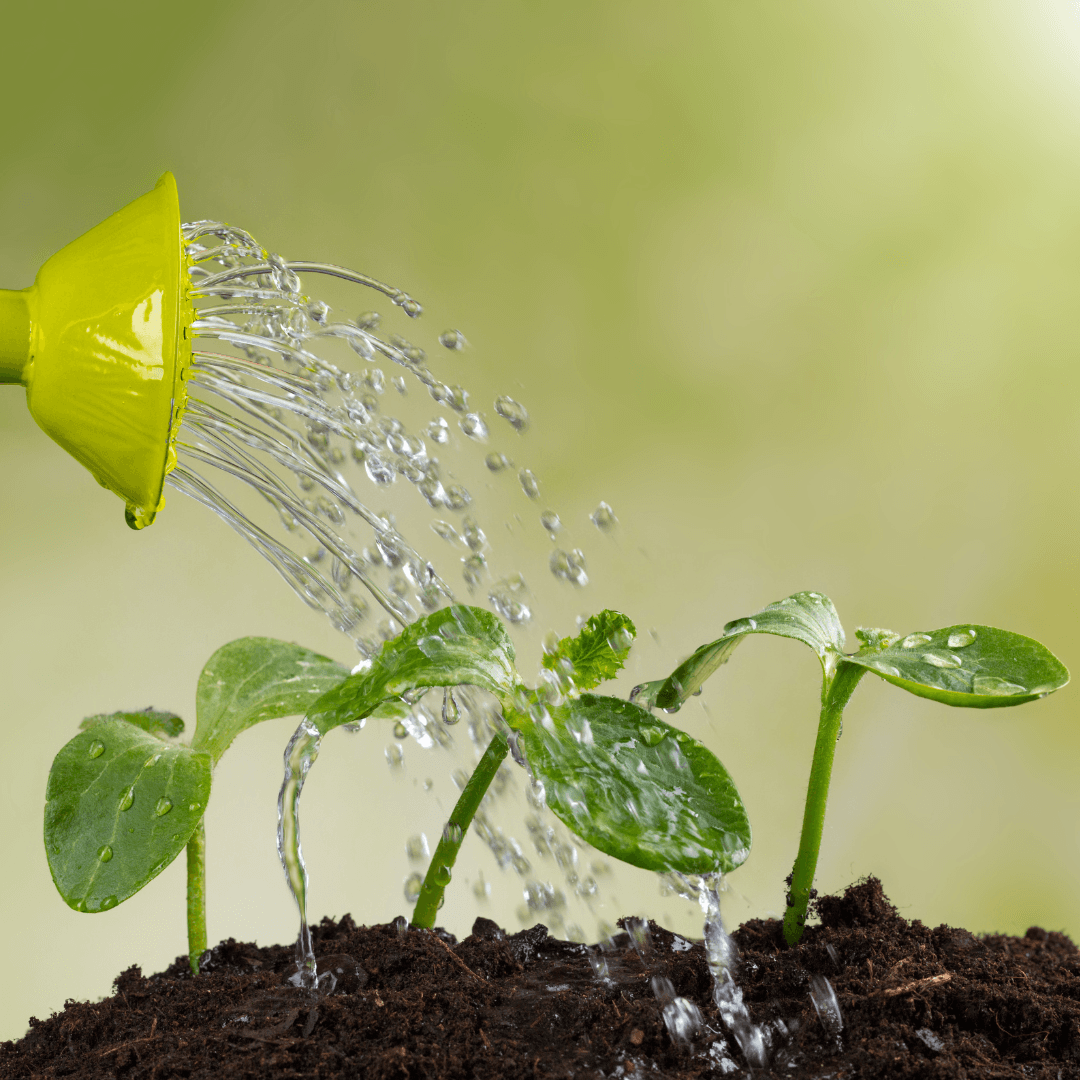
5. Watering Requirements To Grow Horseradish In Containers
Water, the lifeblood of horseradish's container existence, demands a delicate equilibrium that hinges on precision and attentiveness.
The cardinal rule in watering horseradish within containers is maintaining soil moisture that strikes the ideal balance between hydration and aeration.
Consistency is key; the soil should remain consistently moist to support vigorous growth, but it must always stay within the threshold of soggy stagnation.
Gauge the soil's moisture level by inserting your finger into the top inch of the soil; when it feels dry to the touch, it's an opportune moment to replenish it with water.
When growing horseradish in containers, monitoring moisture becomes even more critical to ensure optimal growth and flavour.
However, avert the temptation to inundate the container with excessive water, which could suffocate the roots and promote the onset of root rot.
Equally pivotal is the consideration of drainage; ensure that the container possesses adequate drainage holes, allowing excess water to escape and preventing moisture accumulation at the root zone.
The marriage of regular moisture checks, appropriate watering intervals, and strategic drainage collectively nurture a thriving horseradish plant, fostering an environment where roots access the nourishment they crave while breathing comfortably within the container's nurturing embrace.

6. Fertilization
Nourishing your container-grown horseradish becomes an artful balance of providing essential nutrients while preserving the integrity of its pungent roots.
The rhythm of fertilization involves a gentle cadence, as horseradish benefits from regular but mindful feeding during its active growth phase.
Opt for a balanced fertilizer that offers a harmonious blend of essential nutrients, enriching the soil's nutrient profile.
Monthly applications of this balanced elixir during the growing season serve as an edible embrace for your horseradish, fortifying its foliage, shoots, and roots with the sustenance they require to flourish.
Yet, a note of caution weaves through this practice: the allure of excessive nitrogen. While nitrogen propels lush foliage, it can inadvertently steal the spotlight from the roots' development, resulting in less flavorful horseradish.
Vigilance is essential in preventing this imbalance; moderation is the guiding principle.
Maintaining a prudent approach to fertilization ensures that your containerized horseradish captures the symphony of growth without compromising its culinary essence.
This delicate dance of nourishment imparts a resounding promise: your horseradish's foliage thrives.
At the same time, its roots unfurl their flavorful potential, culminating in a harvest that satisfies both the senses and the palate.
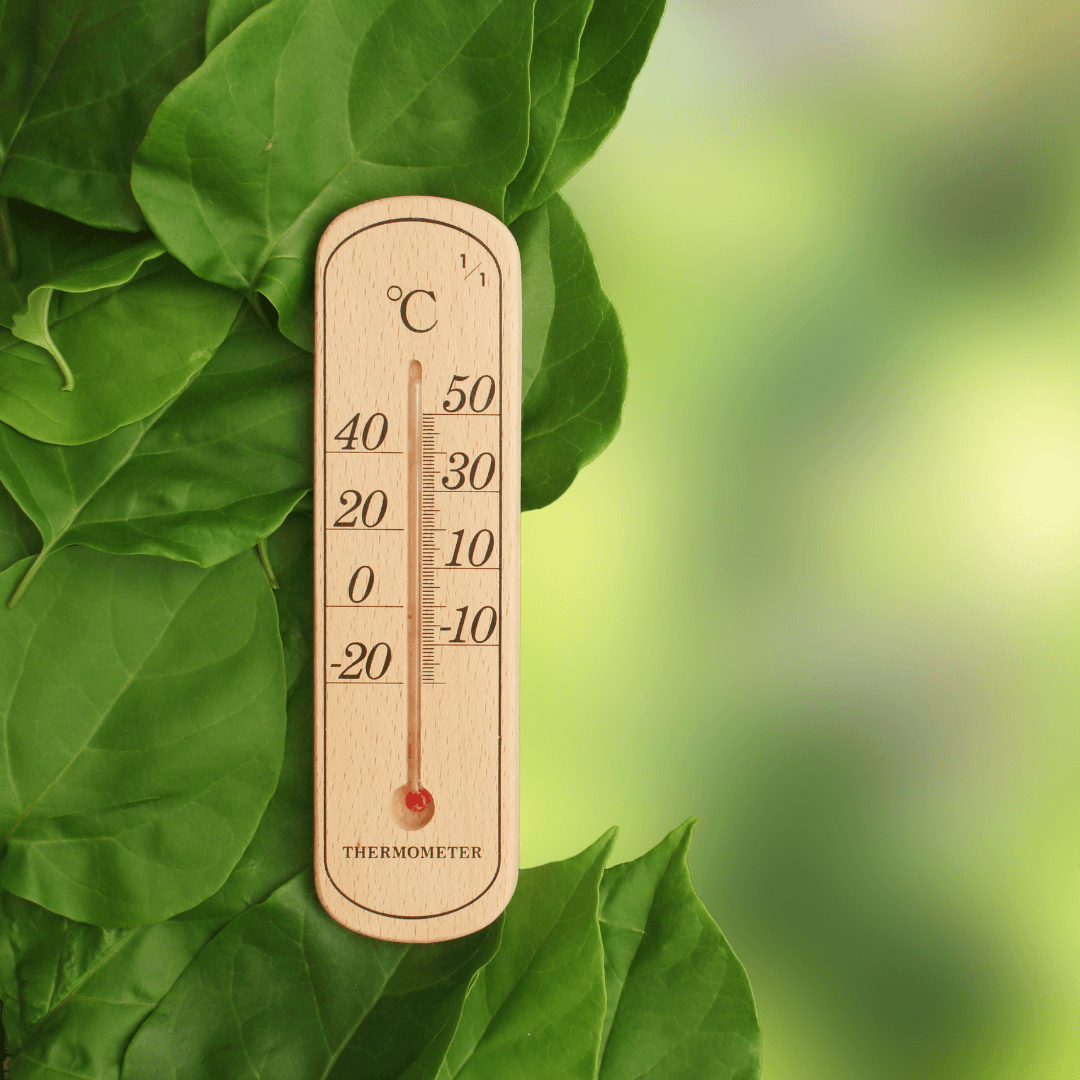
7. Temperature Requirements To Grow Horseradish
Navigating the realm of temperature is a choreography of care when cultivating horseradish within the confines of a container.
This rugged plant prefers cooler temperatures, where its vitality finds resonance. However, the ever-changing tapestry of seasons often demands an element of vigilance.
As hardy as horseradish may be, safeguarding it from the extremities of temperature can bolster its growth trajectory. Horseradish thrives enthusiastically in the embrace of cooler temperatures, its roots delving into the soil with zeal.
To this end, during periods of excessive cold, insulate the container with mulch or cover it to offer a protective layer that mitigates the chilling effects.
Conversely, when heat waves ripple through, orchestrate a shield of partial shade that wards off the sun's intensity.
This harmonic balance between nature's elements and your strategic interventions ensures that horseradish maintains its optimal growth, all while upholding its culinary essence.
By harmonizing temperature nuances with your container's microcosm, you forge an environment where horseradish flourishes, steadfast and vibrant, echoing the rhythmic heartbeat of seasons in your container garden.

8. Pruning Horseradish
Pruning emerges as a choreography of nurturing within the horseradish container, where every snip holds the potential to amplify its vitality.
As the plant's lifecycle unfolds, vigilance becomes your guide. Flower buds, though captivating, possess the power to redirect the plant's energy away from the roots.
By trimming off these budding distractions, you channel the plant's resources toward robust root development, yielding more flavorful harvests.
However, the symphony of pruning extends beyond flowers to embrace leaves. Yellowing or deceased leaves, while a natural progression, can serve as conduits for potential disease or pest infestations.
Wielding pruning shears as a beacon of renewal is paramount to curating a thriving plant. Removing these ailing leaves liberates the plant's vitality, channelling it toward fresh growth and nourishing its roots.
This meticulous practice isn't just an act of visual tidiness; it's a rhythmic cadence that orchestrates a flourishing container garden, where horseradish is the embodiment of vitality, unfurling its leaves with fervour and nurturing roots that delve deep within the soil in pursuit of culinary excellence.

9. Root Barriers
Managing the exuberant tendencies of horseradish within a container calls for a strategic dance incorporating root barriers as the silent sentinels of containment, a crucial consideration when growing horseradish in containers.
While horseradish's vigorous growth is a testament to its vitality, harnessing this energy within the container's bounds is essential.
Whether integrated into the container design or thoughtfully added, root barriers function as guardians of control against the plant's innate invasiveness.
They intercept the roots' ambitious quests beyond the container's confines, thus curbing their potential to infringe upon neighbouring plants or garden spaces.
When selecting containers, consider those equipped with built-in root barriers, which intuitively restrict the roots' reach.
Alternatively, you can craft a barrier by lining the container's interior with landscaping fabric or plastic to form an invisible fortress that guides the roots toward vertical growth rather than lateral exploration.
This approach establishes a harmonious partnership with horseradish, allowing it to flourish while respectfully adhering to spatial limits.
In this container dance, the roots' exuberance becomes a celebration of growth, encapsulated within the container's embrace and directed towards nourishing the plant's essence while preserving your garden's integrity.

10. Mulching Horseradish
Mulching, the art of layering nature's embrace over the soil, becomes a poignant gesture of care within the horseradish container realm.
This delicately nuanced practice serves a dual purpose that echoes across the dimensions of moisture retention and weed suppression, essential when growing horseradish in containers.
With a gentle hand, apply a thin, protective veil of mulch atop the soil's surface, which acts as a guardian against the unforgiving grasp of evaporation.
This moisture-preserving shroud ensures the soil remains consistently hydrated, nurturing the roots' thirst for life.
Moreover, this mulch barrier speaks to the garden's choreography of tidiness by thwarting the advance of weeds that vie for attention and sustenance.
However, the grace lies in the nuance of distance; as the mulch blankets the soil, a dance of respect unfolds.
Allow space between the mulch and the plant's base, for this interval safeguards against moisture accumulation at the root zone, preventing potential rot and disease.
This delicate equilibrium between mulch's embrace and the plant's proximity curates a harmonious microcosm, where horseradish flourishes amidst the soft embrace of mulch, nurtured by its protection and unchecked in its growth.

11. Harvesting Horseradish Roots
The culmination of your horseradish container journey emerges in the art of harvesting, a reverent act that reaps the rewards of your nurturing efforts.
As the canvas of seasons unfolds, the opportune moment beckons after the first frost or during the embrace of early spring, when the plant, dormant yet brimming with flavour, beckons to be unearthed.
With purposeful intention, lift the entire plant from the container's embrace, gently coaxing it from the soil and cradling its growth.
Once mined, the transformation occurs, where the verdant leaves yield to the flavorful roots beneath.
Tenderly sever the leaves, allowing the plant's essence to concentrate within the roots, the heart of your horseradish journey.
With roots now bared, usher them to a cool, dark sanctuary, a place that echoes the womb of the earth that nurtured them.
This sacred space preserves its essence, a culinary treasure awaiting your call. As you embark on your gastronomic endeavours, remember that harvesting is a homage to the culmination of patience, care, and stewardship.
With each slice, grate, or mince, you unearth the roots themselves and the story of growth, from container to culinary delight, now poised to awaken the senses and celebrate the journey of horseradish cultivation.
Conclusion
In container gardening, cultivating horseradish unfolds as a symphony of careful considerations and nurturing gestures.
As you conclude your journey through these tips, you hold the keys to a thriving container garden where growing horseradish in containers thrives and flourishes.
Each tip is a note in this symphony, contributing to the harmonious growth of a robust plant within a confined space.
With patience, intention, and these tips as your guide, your horseradish container garden becomes a testament to the beauty and bounty that can emerge from even the smallest spaces.
May your horseradish thrive, your culinary creations dazzle, and your container garden serve as a source of inspiration and connection to the rhythms of nature.
I trust you enjoyed this article on A Guide To Growing Horseradish In Containers. Please stay tuned for more blog posts shortly. Take care!
JeannetteZ
>>>Please click here to read my all-inclusive article about Container Gardening<<<
>>>Are you interested in homegrown herbs and medicine? Please click here to find out more about it!<<<
Your Opinion Is Important To Me
Do you have thoughts, ideas, or questions? I would love to hear from you. Please leave your questions, experiences, and remarks about A Guide To Growing Horseradish In Containers in the comments below. You can also email me at Jeannette@Close-To-Nature.org.
Disclosure
This post may contain affiliate links. As an Amazon Associate and other affiliate programs, I earn from qualifying purchases at no extra cost to you. Please read my full affiliate disclosure.
You might also enjoy these blog posts:
Best Eco-Friendly Practices For Animals
LED Lighting For Solar-Powered Applications
The Science Behind LED Technology
LED Lighting For Sustainable Architecture

